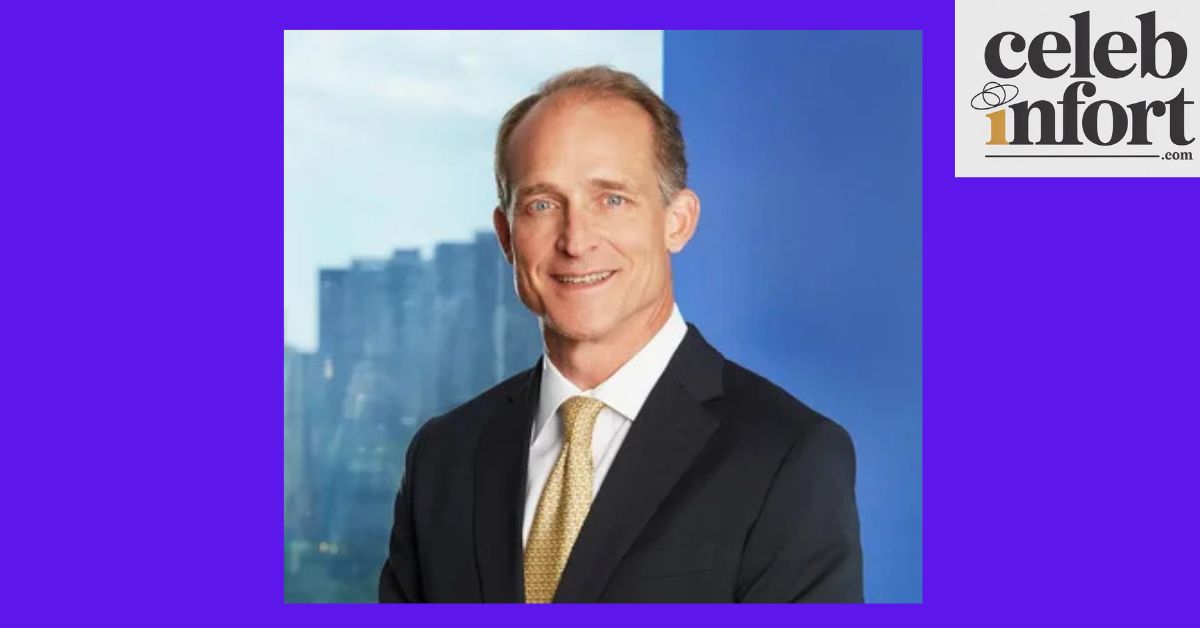The net worth of Goodwill CEO Steven C. Preston has sparked widespread curiosity among donors, employees, and the public who wonder how much the leader of a major nonprofit truly earns. As the head of Goodwill Industries International, Preston oversees one of America’s largest charitable networks, known for empowering individuals through job training and employment programs. Yet, questions surrounding the Goodwill CEO’s net worth, the Goodwill CEO’s salary, and nonprofit executive compensation continue to dominate online discussions. Understanding his financial background offers insight into how nonprofit leadership pay is structured, how Goodwill organization structure impacts compensation, and what transparency means for maintaining public trust in one of the nation’s most recognizable charities.
Understanding the Compensation of Goodwill CEO Steven C. Preston
In the world of nonprofit executive compensation, the figure for Steven C. Preston (the CEO of Goodwill Industries International) draws a lot of attention. His reported annual compensation for 2023 reached approximately $632,016 according to IRS filings. This figure includes base salary, bonuses, and other reportable benefits. It’s important to recognize that this compensation reflects a large-scale national nonprofit organization’s leadership responsibilities rather than private-sector CEO levels.
However, when we ask “how much does the Goodwill CEO make?”, we must distinguish between compensation (salary + perks + benefits) and true personal net worth. Some online sources estimate his net worth to be near $10 million, yet these estimates are speculative and not supported by audited disclosures. The breakdown of his salary, bonuses, and retirement benefits shows the complexity of nonprofit executive pay.
YOU CAN ALSO READ THIS: How to Make Money from Sheep Farming: Profitable Strategies
The Truth About Goodwill’s Ownership and Profits
Many people mistakenly believe that Goodwill is privately owned and that top executives benefit like corporate shareholders. In reality, Goodwill Industries International is a 501(c)(3) nonprofit. It does not have an “owner” in the traditional sense, and surplus revenues are reinvested into programs rather than distributed as profits.. Under the structure of the organization, each local Goodwill agency operates independently under its own board of directors, which means the national office does not dominate every detail of every local unit. This decentralized design influences both the organizational structure and the calculation of executive compensation across the network.
When examining Goodwill ownership and profits, one discovers that revenues come from thrift-store sales, donations, and grants, and are directed into mission-driven activities like job training and employment services rather than profit payout. The model ensures that how nonprofits reinvest profits is central to maintaining public trust and aligning with the mission.
Comparing Charity CEO Salaries Across Nonprofits
When we look at nonprofit CEO salaries, Steven Preston’s compensation must be viewed in the context of large‐scale charities. For example, many charity CEOs lead multi-billion-dollar operations, and their pay sometimes exceeds $1 million. In 2023, Preston’s compensation of ~$632K sits below the highest brackets but above smaller‐scale organizations. A table helps visualize this:
| Organisation scale | CEO Compensation example | Notes |
| Large national nonprofit ($Billions in revenue) | ~$632K (Goodwill Industries) | Steven Preston’s pay in 2023 |
| Smaller local charity (tens of millions) | <$300K | Lower-scale operations |
| Top-tier large health nonprofits | >$1 million | Reflects bigger budgets, complex operations |
This comparison shows that while the Goodwill CEO’s salary is substantial, it is not unprecedented in the broader charity sector. It also underscores the charity CEO salaries comparison nuance: size, scope, geography, and mission matter deeply.
Inside the Goodwill Organizational Structure
Goodwill Industries International operates as a federated network of more than 160 autonomous local and regional Goodwill organizations across the U.S. and Canada. Each has its own board of directors and CEO. The national office provides membership services, standard setting, brand support, and coordination. This structure means that Preston’s role is one of a national leader rather than owner-manager of all operations. Local CEOs set compensation under their own governance frameworks. Because of this, the organization’s Goodwill organization structure dilutes direct executive control and influences how compensation levels are set locally versus nationally.
Moreover, this networked model affects nonprofit financial oversight since each agency files its own IRS Form 990 and reports to its board. The national filing for Goodwill Industries International shows assets of ~$67 million and liabilities of ~$9.4 million in one year. The decentralization means that comparisons between executives across local agencies must account for varying revenue bases, regional cost differences, and mission scopes.
Public Reaction to Goodwill CEO Compensation
The topic of nonprofit executive compensation ethics inevitably invites public scrutiny. Many donors and community members question whether high salaries are appropriate for organizations whose mission is charitable. In Goodwill’s case, some Internet rumors claimed that the CEO earned more than $2.3 million a year, which the organization explicitly refuted. The statement that “he does not make $2.3 million a year” highlights how public perception of charity CEOs can be distorted by misinformation.
This debate touches on executive pay and community trust: when donors perceive a mismatch between mission and remuneration, confidence can erode. Goodwill’s efforts toward Goodwill transparency — publishing annual reports, IRS filings, and compensation disclosures — play a key role in reinforcing its credibility and accountability.
The Case of the Former Goodwill Sacramento CEO
A dramatic example of governance failure within the network came from the branch referenced as the “Richard Alan Abrusci” trust case with a former Goodwill Sacramento CEO, indicted for allegedly misappropriating more than $1 million. This episode emphasizes the importance of nonprofit CEO accountability and oversight mechanisms within charitable organizations. Though not directly tied to the national office, it reflects on the broader ecosystem of Goodwill.
The former Goodwill Sacramento CEO scandal serves as a cautionary tale: even highly reputable networks can face weaknesses in compliance and governance. The implication is that the board of directors, audit committees, and donors must remain vigilant to prevent abuse of funds and to ensure mission alignment.
How Nonprofit CEOs Are Evaluated
In organizations like Goodwill, executive evaluation covers both financial and impact dimensions. Boards use metrics such as job placements, training outcomes, revenue growth, efficiency of programs, and donor satisfaction to assess performance. The CEO compensation breakdown is often tied to such key performance indicators. For example, Preston’s role in integrating AI into job-skills training highlights a modern dimension of Goodwill leadership impact. Boards and independent watchdogs (such as charity ratings agencies) also review governance, transparency, and ethical standards, which touch on nonprofit ethics and governance.
Furthermore, organizations rely on disclosure of compensation via IRS Form 990 compensation data, which enables external stakeholders to evaluate how executive pay aligns with organizational scale and outcomes. The evaluation frameworks keep the mission at the center while balancing incentives, which is essential given the debate around nonprofit leadership pay.
The Real Impact of Goodwill’s Leadership
Under Preston’s leadership, Goodwill has emphasized scaling job training, leveraging technology, and embracing sustainability through goods-reuse programs. The narrative around his compensation cannot be separated from the mission of the organization: helping people gain employment and supporting underserved communities. The Goodwill Industries charity’s impact is visible in millions of job-seekers assisted across the U.S., and infrastructure spanning 4,200+ retail stores. This illustrates how leadership must balance business-like operations with community-driven outcomes.
The relationship between executive leadership pay and organizational results becomes clearer when we consider that effective leaders must manage large-scale operations, complex logistics (donation, retail, training), and significant human-services components. The question of Goodwill CEO net worth thus involves not only personal accumulation but embedded responsibilities and social stake.
Final Thoughts on Executive Pay in Nonprofits
When weighing executive pay in charitable organizations, context matters. The compensation must reflect the size, complexity, and mission of the organization while ensuring executive compensation ethics and donor trust. In the case of Goodwill and Steven Preston, the numbers appear within the upper range for national nonprofits—but not wildly out of line compared to peer institutions.
Ultimately, transparency, governance by the board of directors, and clear reporting of impact (not just dollars) strengthen the balance between leadership reward and mission integrity. As the landscape evolves, so too will standards for charity leadership remuneration, meaning stakeholders must stay engaged and informed.
FAQ’s:
What is Steven C. Preston’s current net worth?
Public records show his salary-based compensation but do not detail full asset holdings. Estimates suggest his net worth might approach $10 million, though this is speculative.
Does the Goodwill CEO make millions from donations?
No. As a nonprofit, Goodwill does not distribute profits to executives. The compensation reflects salary plus benefits tied to responsibilities—not personal profit from donor funds.
How are Goodwill executive salaries set?
Compensation is recommended by each agency’s board of directors based on size, performance, and regional cost. National and local CEOs receive separate oversight under the Goodwill network.
Who decides CEO pay in federal tax oversight?
Compensation must be reported in Form 990 filings. Data such as the Goodwill financial transparency report provides public insight into pay levels, ensuring accountability.
Why does CEO pay in nonprofits differ so much?
Variation arises from differences in revenue scale, mission scope, regional cost structures, and organizational complexity. The sector’s diversity means one-size doesn’t fit all when comparing nonprofit organization performance.
Conclusion
In the end, examining the net worth of the Goodwill CEO, Steven C. Preston, reveals more than just a compensation figure—it uncovers the interplay between leadership, mission, accountability, and public trust. While his reported compensation may be higher than some nonprofit leaders’, it appears consistent with the demands of a national, complex organization like Goodwill. Ensuring transparency, aligning pay with mission outcomes, and maintaining governance integrity will remain vital as donors and community stakeholders continue to evaluate how charitable dollars and leadership responsibilities go hand in hand.

